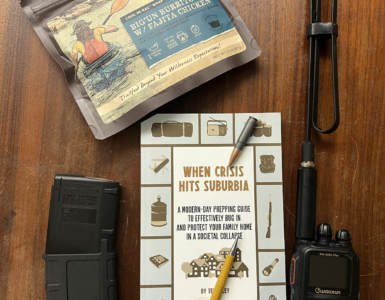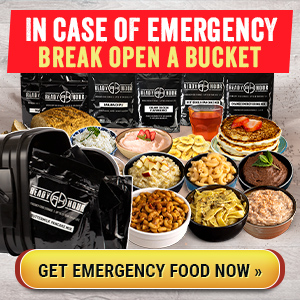Tornadoes—nature’s most dramatic, temperamental, and wildly unpredictable weather events. One moment, everything is peaceful; the next, the sky darkens, the wind howls, and a spiraling vortex of chaos descends upon the land. If you’ve ever found yourself contemplating just how to outwit a swirling mass of atmospheric fury, fear not! With a little preparation, a smidge of strategy, and a fair dose of common sense, you can be ready when the winds decide to play rough.
Understanding the Whirlwind: Tornado Basics
Tornadoes are born from fierce thunderstorms when warm, moist air collides with cool, dry air. This collision creates instability, and with the right mix of wind shear and rotation, a tornado forms. These violent columns of rotating air can reach speeds of over 300 miles per hour, leveling homes, uprooting trees, and sending cows on unexpected airborne journeys.
Tornadoes can strike almost anywhere, but the U.S. is home to the infamous Tornado Alley, stretching from Texas through Oklahoma, Kansas, Nebraska, and into the Midwest. However, if you think you’re safe just because you don’t live in this belt of atmospheric anarchy, think again—tornadoes have touched down in all 50 states.
The Tornado Alert System: Decoding the Warnings
When it comes to tornado warnings, the National Weather Service (NWS) doesn’t play around. Knowing the difference between various alerts is key:
- Tornado Watch: Conditions are ripe for tornado formation. It’s like the sky’s way of saying, Hey, things could get wild. Keep an eye out!
- Tornado Warning: A tornado has been spotted, either visually or via radar. This is your cue to get moving—seek shelter immediately.
- Tornado Emergency: A rare and ominous warning, issued only when a confirmed large and destructive tornado is on the ground. If you hear this, don’t hesitate—take cover immediately!
Preparing for the Cyclonic Circus: What You Need to Do Before a Tornado Strikes
A tornado’s unpredictability means that the best defense is a solid plan. Here’s how to be ready before the sirens start wailing.
1. Find a Safe Shelter
Tornadoes don’t mess around, and neither should you when it comes to finding a secure place to ride out the storm. Your best bets include:
- A basement or storm cellar (gold standard of tornado protection)
- An interior room on the lowest floor, away from windows (bathrooms, closets, or under stairwells are ideal)
- A designated community tornado shelter if your home isn’t up to the challenge
If you live in a mobile home, get out and seek a more stable structure. Mobile homes and tornadoes go together like peanut butter and gasoline—not a good combination.
2. Assemble Your Tornado Preparedness Kit
A tornado can leave you without power, water, or access to basic necessities. Your emergency kit should include:
- Flashlights (preferably crank-powered or with spare batteries)
- A NOAA weather radio (because cell towers might not survive the storm)
- A whistle (to signal for help if needed)
- Non-perishable food and bottled water (enough for at least 72 hours)
- A first-aid kit (for when debris makes its presence known)
- Sturdy shoes (because stepping on nails and shattered glass isn’t fun)
- Copies of important documents (stored in a waterproof container)
- Any necessary medications
3. Know Your Evacuation Route
If authorities issue an evacuation order, don’t waste time pondering your next move—act fast. Identify multiple routes to safety, and remember that bridges and overpasses are not safe tornado shelters (despite what Hollywood may have you believe).
4. Secure Your Home and Property
You can’t tornado-proof a house completely, but you can minimize damage:
- Trim trees and remove loose branches
- Secure outdoor furniture, grills, and other flying projectile candidates
- Reinforce doors and windows with storm shutters
5. Conduct Family Tornado Drills
Practicing how to react during a tornado may feel silly, but in a real emergency, muscle memory can save lives. Hold tornado drills twice a year, ensuring that everyone knows where to go and what to do.
When the Sky Turns Green: What to Do During a Tornado
The wind picks up, the sky darkens to an eerie shade of green, and the sirens start wailing. It’s go-time. Here’s what to do:
If You’re at Home:
- Get to your safe shelter immediately.
- Cover your head and neck with your arms or use a mattress, blanket, or helmet for added protection.
- Stay away from windows—tornado winds love to turn glass into high-speed daggers.
If You’re in a Car:
- Do not try to outrun the tornado (this rarely ends well).
- If possible, drive perpendicular to the tornado’s path and seek sturdy shelter.
- As a last resort, leave your vehicle and lie flat in a ditch, covering your head.
If You’re Outside:
- Get inside a sturdy building if one is nearby.
- If no shelter is available, find a low-lying area and lie flat, covering your head.
After the Roar: Post-Tornado Survival
The tornado has passed, but the danger isn’t over. Stay vigilant.
- Listen to local authorities for emergency instructions.
- Watch out for hazards like downed power lines, sharp debris, and gas leaks.
- Check on your neighbors (especially the elderly or those with disabilities).
- Avoid entering heavily damaged buildings until they’ve been declared safe.
Tornado Myths: Let’s Bust ‘Em
- “Opening windows will equalize pressure and prevent damage.” Nope! This only lets wind inside, increasing the risk of structural failure.
- “Tornadoes don’t strike big cities.” They absolutely do—just ask the residents of Nashville or St. Louis.
- “The southwest corner of a basement is the safest place to be.” Not necessarily. The safest spot depends on the structure and tornado’s direction.
The Final Word: Be Smart, Be Safe
Tornadoes are unpredictable, unforgiving, and utterly indifferent to our plans. But with the right preparation, they don’t have to catch you off guard. Knowing where to go, what to do, and how to protect yourself can make the difference between disaster and survival.
So, take heed, dear reader: When the winds howl and the sky churns, you’ll be ready. Stay sharp, stay safe, and may the funnel clouds pass you by!


















